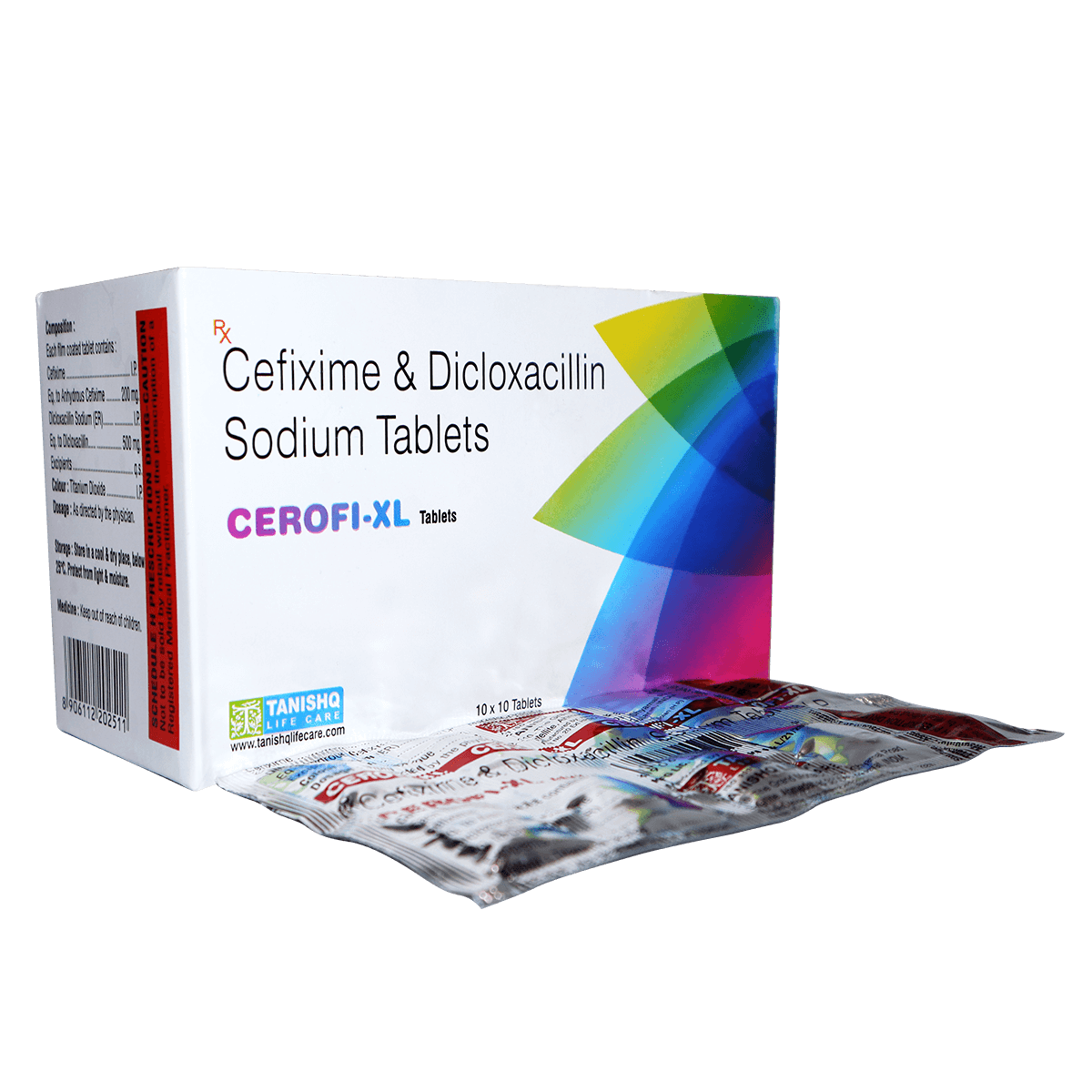
Cerofi XL 200
This combination tablet contains Cefixime (a third-generation cephalosporin) and Dicloxacillin (a penicillinase-resistant penicillin antibiotic). Both antibiotics work in complementary ways to treat a variety of bacterial infections.
- Recommended Usage
Indications
- Respiratory Tract Infections: Pharyngitis and tonsillitis, Sinusitis, community acquired pneumonia, & Chronic bronchitis.
- Urinary Tract Infections: Cystitis, Urethritis and pyelonephritis.
- Skin and Soft Tissue Infections: Infections such as Cellulitis, abscesses
- Ear Infections: Otitis media.
- Sexually Transmitted Infections (STIs): Uncomplicated gonorrhea.
Dosage and Administration
Cefixime 200 mg and Dicloxacillin 500 mg: One tablet may be taken once or twice daily.
The combination is generally not recommended for children.
Precautions
Dicloxacillin and Cefixime are both antibiotics that belong to the penicillin and cephalosporin classes. If you have a known allergy to either class, you should not take this combination.
Cefixime and Dicloxacillin are excreted by the kidneys, special caution should be taken in patients with kidney problems.
Dicloxacillin is metabolized in the liver, so patients with liver disease should use this medication with caution.
Cefixime and Dicloxacillin can cause gastrointestinal symptoms such as nausea, vomiting, and diarrhea.
Benefits
Broad-Spectrum Coverage : covers a wide range of Gram-positive and Gram-negative bacteria.
Effective for Resistant Infections : combination increases the overall efficacy against resistant bacterial infections.
Convenient Dosing : The combination in a single tablet allows for convenient dosing, reducing the need for multiple separate antibiotic treatments.
Lower Risk of Superinfection : Cefixime and Dicloxacillin lowering the risk of superinfection from multiple bacteria..
Product Category
- Anti Infective
- Injectables
- Pre Filled Syringe
- Immunosuppressants
- Anti Ulcerant/ppis
- Joint Care
- Enzymes
- Heamatinic Agents
- Antioxidant Multivitamins
- Laxatives
- Anti Alergic
- Corticosteroids & Combinations
- Anti Fungal
- Medicated Soaps
- Emollients and Moisturisers
- Face Care
- Puva & Sun Protectors
- Hair Care
- Anti Acne Preparation
- Analgesics Antipyretics & Anti Inflammatory
- Anti Spasmodic & Anti Emetic
- Expectorants Antitussives & Mucolytics
- Antidiarrheals
- Cardiac Drugs
- Antipsychotics
- Anti Epileptics
- Migraine
- Anti Dyspetic
